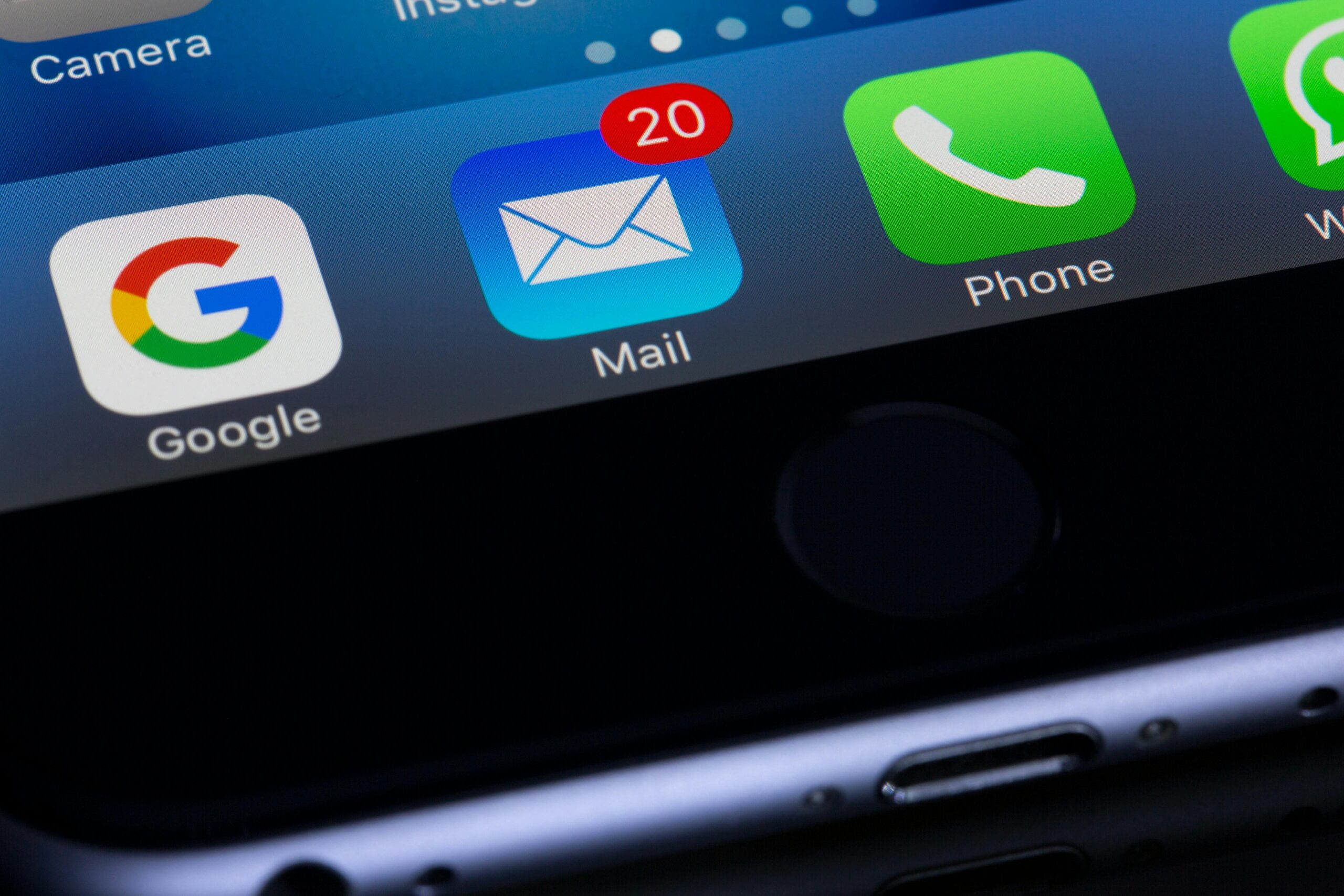4. Avoiding Social Engineering & Phishing

Social engineering tactics pose a significant threat within the healthcare sector, targeting individuals to extract sensitive information. Cybercriminals adept at social engineering exploit human psychology to trick us into giving up confidential data. Common objectives of these attacks include obtaining bank information or unauthorized access to computer systems. In the healthcare sector, it’s patient health data that’s at risk. It’s crucial for healthcare professionals to recognize the signs of social engineering and phishing attacks and to implement strategies to mitigate these risks. By understanding these tactics and adopting preventive measures, healthcare organizations can fortify their defenses against social engineering threats and protect patient confidentiality and sensitive data.
What Does Social Engineering and Phishing Look Like?
In the healthcare industry, the consequences of a cybercriminal gaining unauthorized access to an individual’s email account can be severe, extending well beyond personal data breaches. When a hacker compromises a healthcare professional’s email, they can misuse the established trust of their contacts. By sending malicious messages from the hijacked account, these attacks can spread to colleagues and patients, potentially exposing sensitive medical information. Using social engineering tactics, these emails often lure recipients with intriguing links, exploiting their curiosity. Clicking on such links can initiate an attack, allowing the hacker’s software to steal confidential information from the victim’s account. Additionally, malicious attachments in these emails can deploy malware, infecting recipients’ computers and perpetuating the attack cycle. To mitigate these risks, healthcare organizations must prioritize email security and educate staff on recognizing and preventing phishing attempts to protect patient privacy and data integrity.

Emails from Trusted Sources
Emails from seemingly trusted sources pose a significant cybersecurity threat. These attacks often impersonate banks, contributing to 93% of successful data breaches, according to studies. Using compelling stories, these emails may urgently ask for your help, claiming that your “friend” is stuck abroad, has been robbed, or is currently in the hospital. They’ll request that you send money to help them “get home,” but in reality, you’re sending funds to the criminals.
Charity Drives
Attackers may solicit donations for a charitable fundraiser or similar cause, providing instructions on how to send your money to them. These types of attacks exploit the victim’s kindness and generosity. They might also present a problem requiring account “verification,” tricking victims into providing sensitive information.
Fake Bankers
Cybercriminals often pose as legitimate sources, such as banks, informing you of an issue with your account. They will ask you to enter your account details on a fake website to “verify” your account, thereby stealing your login credentials for their own use.
Fake Prizes
You might receive phishing emails claiming you’ve won a lottery or are the millionth visitor to a website. These “greed phishes” tempt people with enticing offers, leading them to provide personal information. Consequently, victims may have their bank accounts emptied and their identities stolen.
Baiting Scenarios
Baiting schemes are common on social networking and classified websites, offering free downloads of the latest movies or fantastic deals. To reduce suspicion, the “seller” may even have a good rating, carefully crafted by the attackers. Those who fall for these schemes risk having their devices infected with malicious software, which can:
- Generate new exploits against themselves and their contacts
- Lead to financial loss over purchases they never made
While phishing attacks are widespread and need only a few victims to be successful, there are effective methods for protecting yourself. These measures primarily involve paying close attention to the details in front of you.

Tips to Avoiding Phishing Attacks
Identifying Suspicious Messages
Spammers want you to act first and think later. If a message conveys a sense of urgency or uses high-pressure tactics, be skeptical and don’t let their urgency influence your careful review! Be wary of unsolicited messages, especially if they appear to be from a service you use.
Verification Measures
To verify if an email is legitimate, use a search engine to visit the official website of the service, or use a phone directory to find their contact number. Always stay in control by finding the website yourself using a search engine to ensure you reach the intended destination.
Hovering Over Links
Hovering over links in an email will show the actual URL at the bottom of your browser. However, even a convincing fake can be deceptive! Keep in mind that your friends and colleagues can also fall victim to social engineering attacks.
Precautions with Attachments
Even if the sender appears to be someone you know, if you aren’t expecting an email with a link or attachment, check with your friend before opening it. If you don’t know the sender personally and aren’t expecting any files, avoid downloading anything to stay safe.

Ways to Protect Yourself
Delete Requests for Financial Information or Passwords
Delete any email requesting financial information or passwords. If you are asked to reply with personal information, it’s a scam.
Reject Requests for Help or Offers of Assistance
Reject any unsolicited offers of help. Legitimate companies and organizations will not contact you out of the blue to provide assistance. If you did not specifically request help from the sender, consider any offer to “help” restore credit scores, refinance a home, or answer your question as a scam.
Set Your Spam Filters to High
Adjust your email program’s spam filters to the highest setting. Check your settings options to find and configure your spam filters. Remember to periodically check your spam folder to ensure legitimate emails aren’t accidentally marked as spam.
Secure Your Devices
Ensure your devices are secure by installing anti-virus software, firewalls, and email filters, and keeping them up-to-date. Set your operating system to update automatically, and manually update your smartphone whenever you receive a notification to do so.
Social engineering tactics pose a significant threat within the healthcare sector, targeting individuals to extract confidential information. Cybercriminals adept at social engineering exploit human psychology to deceive individuals into divulging sensitive data. Common objectives of these attacks include obtaining bank information or unauthorized access to computer systems. Criminals leverage social engineering techniques due to the perceived ease of manipulating human trust compared to hacking software defenses. It’s crucial for healthcare professionals to recognize the signs of social engineering and phishing attacks and to implement strategies to mitigate these risks. By understanding these tactics and adopting preventive measures, healthcare organizations can fortify their defenses against social engineering threats and protect patient confidentiality and sensitive data.
What does Social Engineer and Phishing look like?
In the healthcare sector, the ramifications of a cybercriminal gaining unauthorized access to an individual’s email account extend beyond personal data compromise. If a hacker infiltrates a healthcare professional’s email, they can exploit the trust associated with their contacts.
By forwarding malicious messages through the compromised account, these attacks propagate among colleagues and patients, potentially jeopardizing sensitive medical information. Leveraging social engineering tactics, these emails often entice recipients with intriguing links, exploiting their curiosity.
Clicking on such links can trigger the attack, enabling the hacker’s program to pilfer confidential information from the victim’s account. Moreover, malicious attachments within these emails serve as vectors for malware deployment, infecting recipients’ computers and perpetuating the attack cycle. To mitigate these risks, healthcare organizations must prioritize email security measures and educate staff on identifying and thwarting such phishing attempts to safeguard patient privacy and data integrity.
Emails From Trusted Sources
Email from another trusted source are a serious cyber security threat. This type of attack often impersonate banks which contributes to 93% of successful data breaches based on studies. Using a compelling story, these type of emails may urgently ask for your help Your “friend” is stuck in some country, robbed, or currently in the hospital. They’ll ask you to send money so they can “get home” but in reality, you’re sending your money to the criminals.
Charity Drives
They may ask you to donate to a charitable fundraiser or some other similar cause likely along with the instructions on how to send your money to the criminals. These types of attacks usually take advantage of their victim’s kindness and generosity. These threats may also present a problem that requires account “verification”
Fake Bankers
Attackers will often pose as a legitimate source such as a bank and inform you that there is an issue with your account. They will ask you to enter your account details to “verify” the account on a fake website, stealing your log-in details for their own use.
Fake Prizers
You also win fake prizes. Phishing emails from lottery or ads that claim that you’re the millionth person who’s been on their website are common forms of this attack. These are the ‘greed phishes’ where people want what is offered and fall for it by giving away their information, then having their bank account emptied, and their identity stolen.
Baiting Scenarios
These schemes are often found on social networking websites, offering you to download the latest movies for free. It can also be a great deal on classified sites or auction sites – to reduce suspicion, the “seller” will even have a good rating which the attackers have already crafted ahead of time! People who often take the bait may have their device infected with malicious software that can…
Generate new exploits against themselves and their contacts
Lose their money over purchases they never made
While phishing attacks are rampant and need only a few users to take the bait for a successful campaign, there are methods for protecting yourself and they don’t require much more than simply paying attention to the details in front of you!
Tips to Avoiding Phishing Attacks
Identifying Suspicious Messages
Spammers want you to act first and think later. If the message conveys a sense of urgency or uses high-pressure sales tactics, be skeptical, and never let their urgency influence your careful review! Be suspicious of unsolicited messages, especially if they’re from a HHP you use.
Verification Measures
Use a search engine to go to the real HHP’s site, or a phone directory to find their phone number to verify if the email you received is legitimate. Stay in control by finding the website yourself using a search engine to be sure you land where you intend to land.
Hovering Over Links
Hovering over links in email will show the actual URL at the bottom, but a good fake can still steer you wrong! Remember that your friends and colleagues can be victimized by social engineering attacks.
Precautions with Attachments
Even when the sender appears to be someone you know, if you aren’t expecting an email with a link or attachment check with your friend before opening links or downloading. If you don’t know the sender personally AND do not expect any file from them, downloading anything is a mistake.
Ways to Protect Yourself
Delete any request for financial information or passwords.
If you get asked to reply to a message with personal information, it’s a scam.
Reject requests for help or offers of help.
Legitimate companies and organizations do not contact you to provide help. If you did not specifically request assistance from the sender, consider any offer to ‘help’ restore credit scores, refinance a home, or answer your question a scam.
Set your spam filters to high.
Every email program has spam filters. To find yours, look at your settings options, and set them to high–just remember to check your spam folder periodically to see if a legitimate email has been accidentally trapped there.
Secure your devices.
Install anti-virus software, firewalls, email filters, and keep them up-to-date. Set your operating system to automatically update, and if your smartphone doesn’t automatically update, manually update it whenever you receive a notice to do so.
